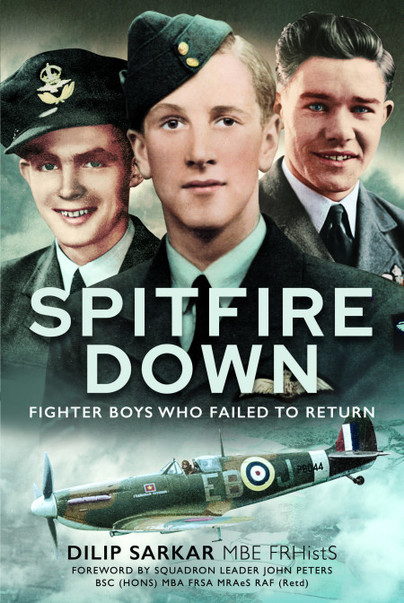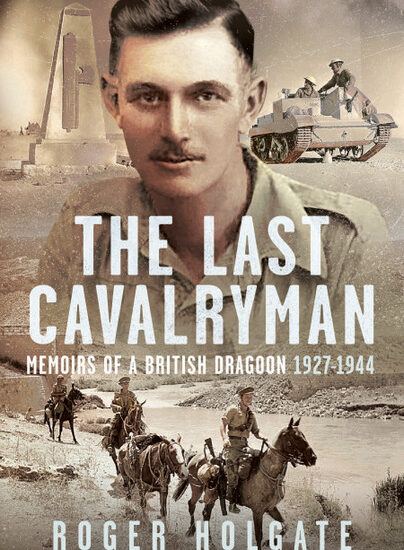Spitfire Down!
Guest post from author Dilip Sarkar MBE.

Eighty-six years after it first flew from Eastleigh airfield in Hampshire, the Supermarine Spitfire remains one of the most iconic fighter aircraft of all time, emerging from the Second World War as the very physical embodiment of Britain’s defiance of Hitler and the country’s essential contribution to Total Victory against Germany. Moreover, and perhaps even more than ever, all these years later the Spitfire has really become the icon associated with British national pride, courage and excellence. The sight and sound of RJ Mitchell’s little fighter continues to inspire and excite, and as airframes are increasingly discovered and re-built, Spitfires are increasingly returning to the skies. The Spitfire, therefore, remains the wartime darling, the star of every air show, and interest in its story, if anything, increases daily, or so it seems.


The Spitfire, however, when all is said and done, is a machine, and until in human hands an inanimate object. A human being, of course, designed the aircraft, others built and maintained it, whilst the stars of the show – the fighter pilots – flew in her to battle. Tragically, the Spitfire’s designer, RJ Mitchell, died prematurely, aged just forty-two, of cancer, in 1937, without ever knowing the contribution he had made, or being aware of just how much the Spitfire excited the public consciousness. Nonetheless, Mitchell designed the Spitfire for one purpose, to defend Britain, and he was acutely aware that this was a warplane, built for killing, and in which pilots could – and would – be killed. In a foreword to one of my earlier books, RJ Mitchell’s son, the now sadly late Dr Gordon Mitchell, summed up his father’s feelings succinctly: –
‘My father was heard to say on a number of occasions that “A Spitfire without a pilot is just a lump of metal”, which was meant to show the high regard and respect he had for the pilots whose job it was to fly his ‘”lump of metal”. I think that this book mirrors those sentiments, in that the first part is devoted to describing the Spitfire in accurate detail, this being followed by in-depth descriptions of eleven individuals who had the task of flying the “lump of metal” into battle’.


The same, in fact, could be said of this particular book, because it develops the same theme, giving currency to the memories of various young pilots who flew Spitfires but failed to return, for one reason or another – some killed, others missing, and one a prisoner of war who survived; some were lost on operations, although a surprising number were killed on training or routine flights. Indeed, here we explore stories of the lesser-knowns, and no so obvious. The astute reader will note that although certain of the pilots included flew during that Battle of Britain, none failed to return during that epic summer of 1940. The reason for that is such stories are told in my previously published Battle of Britain 1940: The Finest Hour’s Human Cost, and so in this volume my focus has been beyond the Battle of Britain.


In this book, we reconstruct the all too brief lives of the young men involved, often privy to their personal letters and diaries, through which get a glimpse of their inner-most thoughts, emotions, and of how it was for people back then. Were RJ Mitchell able to comment, I am sure he would approve of this endeavour to emphasis this human experience – and sacrifice – connected with his wonderful Spitfire. These young men came from various backgrounds and walks of life, professional airmen and amateurs, NCOs and officers, and represent what was a multi-national effort to defeat Hitler. Those included are not because of any preconceived commercial plan, all have simply crossed my path, research-wise, at some stage over the years, and are brought together here. Sadly, owing to the sheer volume and march of time, countless stories, such as those you are about to read, will be lost to history, but these at least have been recorded and represent those who gave their all – flying Spitfires.



Dilip Sarkar MBE FRHistS, 12 August 2022
Link to article concerning Spitfire Down appearing in the Mail Online.
Dilip’s website.
Dilip is Project Lead on the new ‘Battle of Britain: The People’s Project’, a partnership between the Battle of Britain Memorial Trust and National Memorial to The Few, and Pen & Sword, details of which can be found here.
Dilip’s YouTube Channel.
Order Spitfire Down here.
Buy tickets for Dilip’s event celebrating publication of his 50th book, in support of The Battle of Britain Bunker here.


